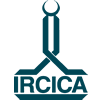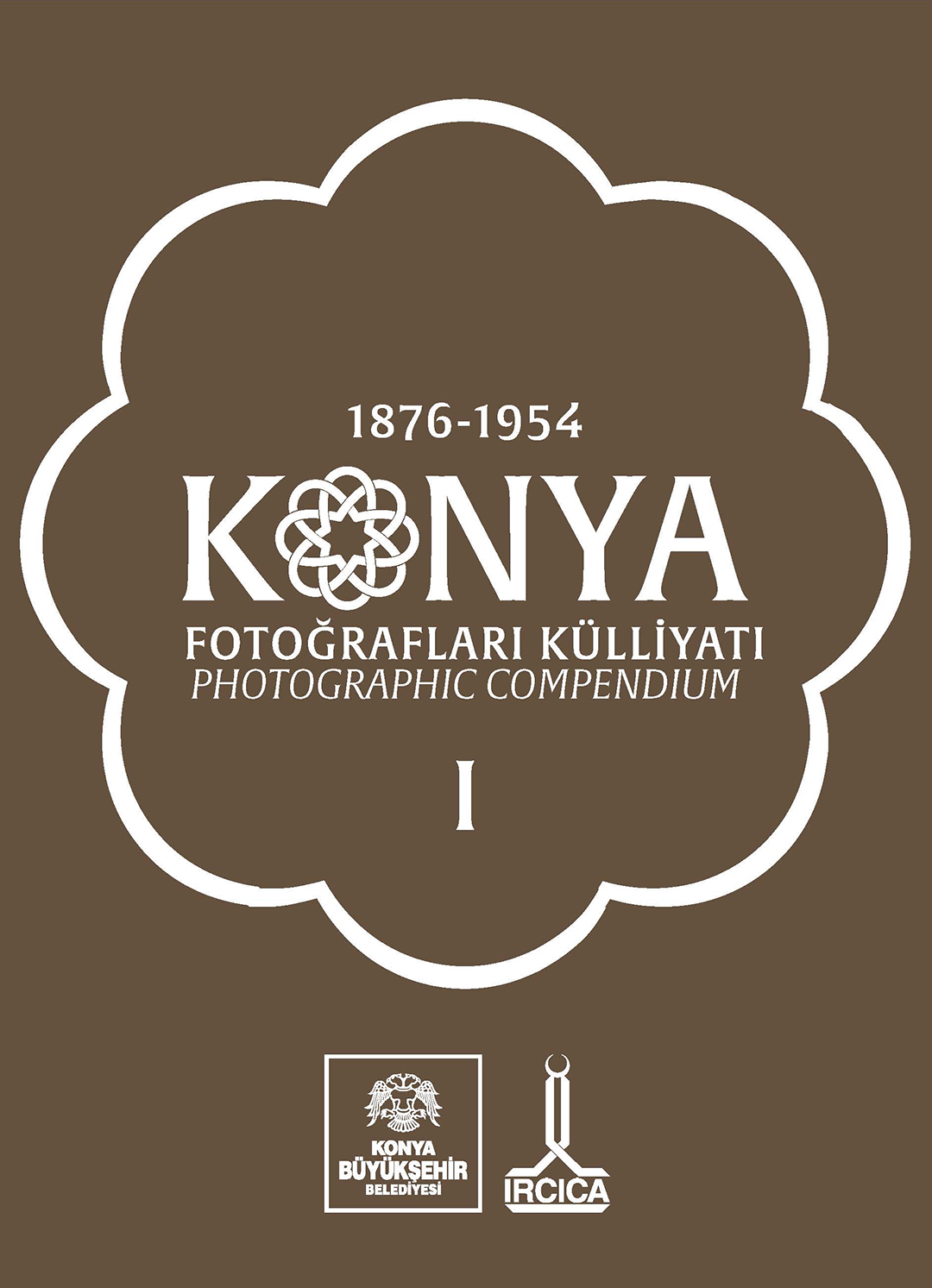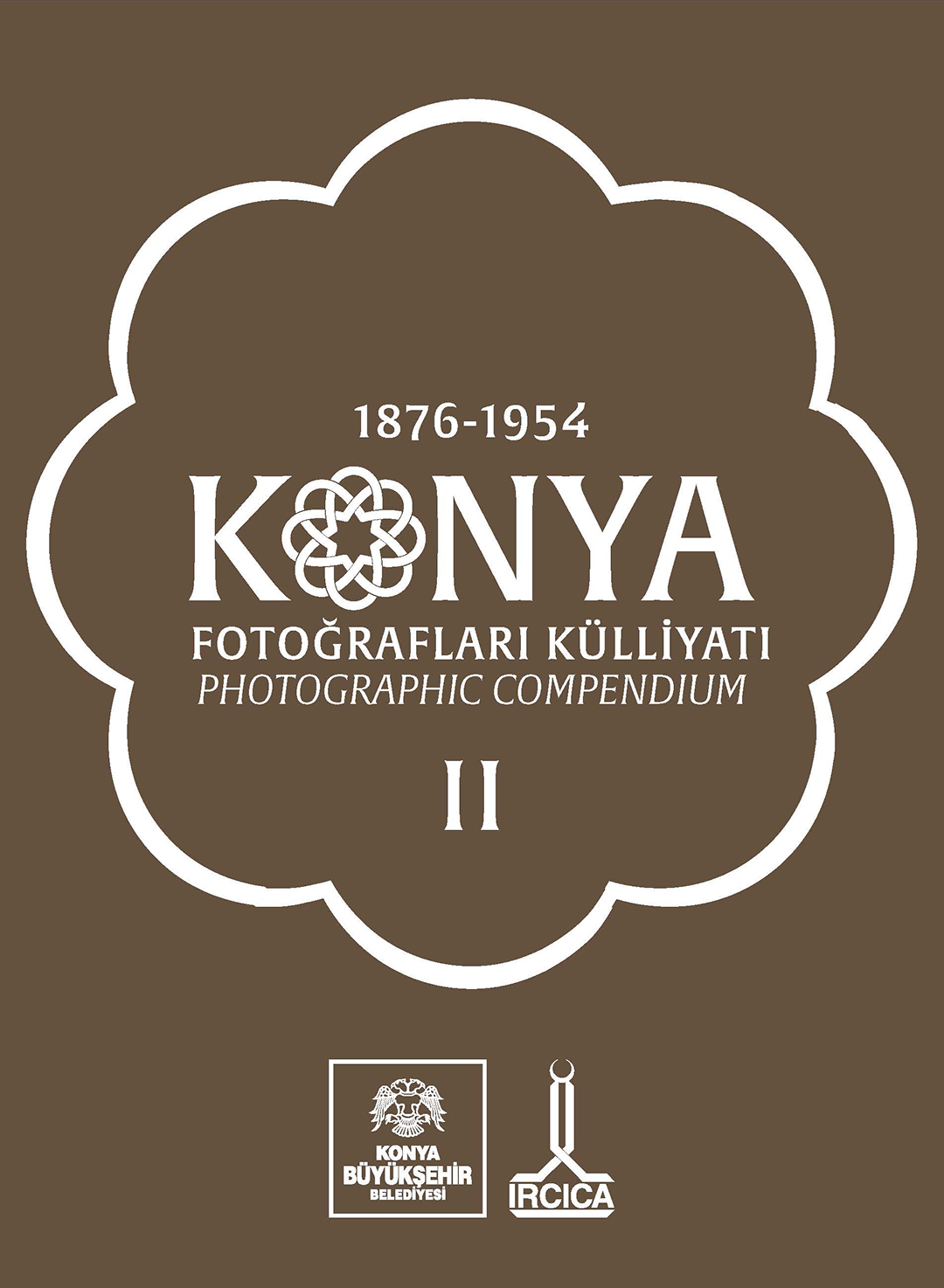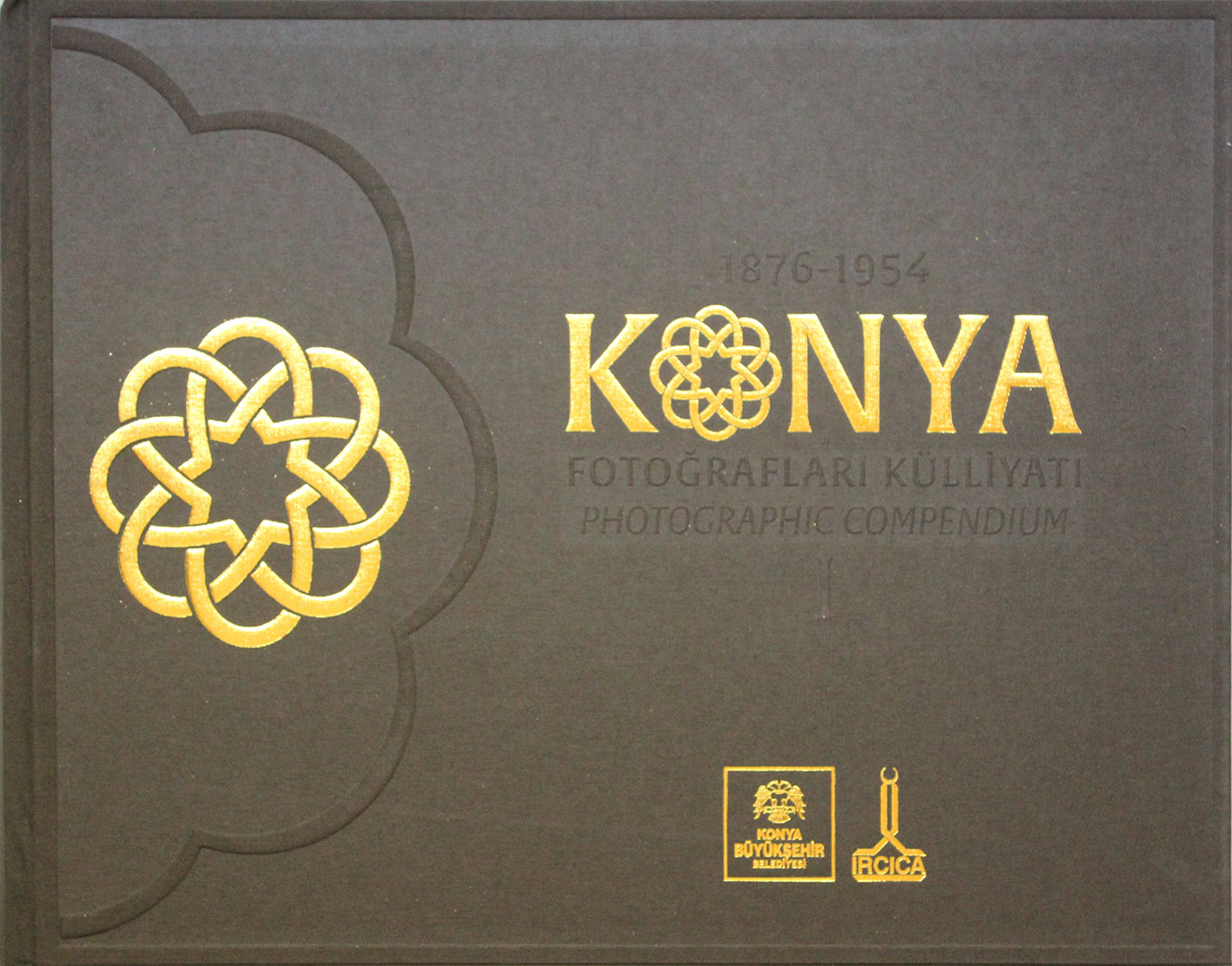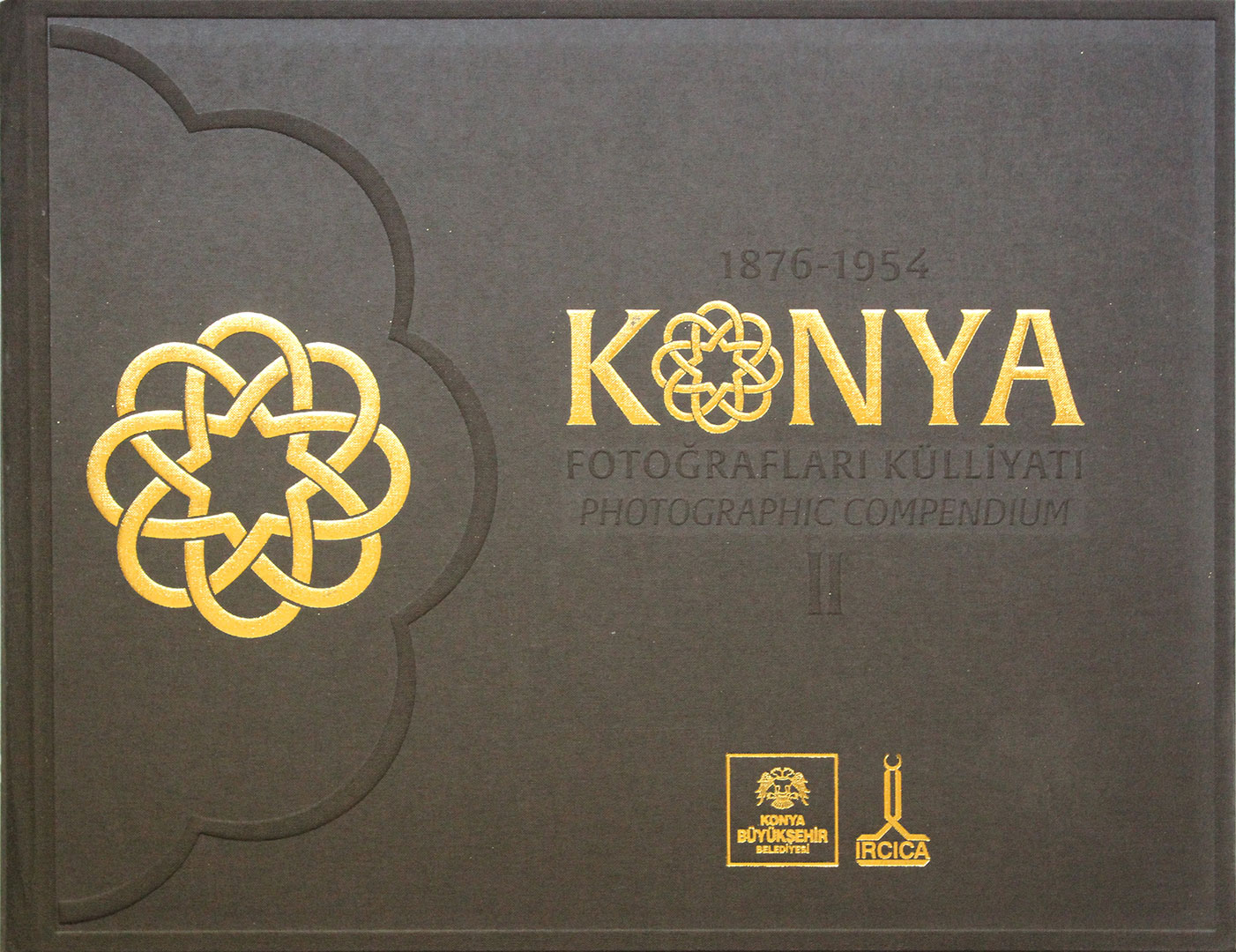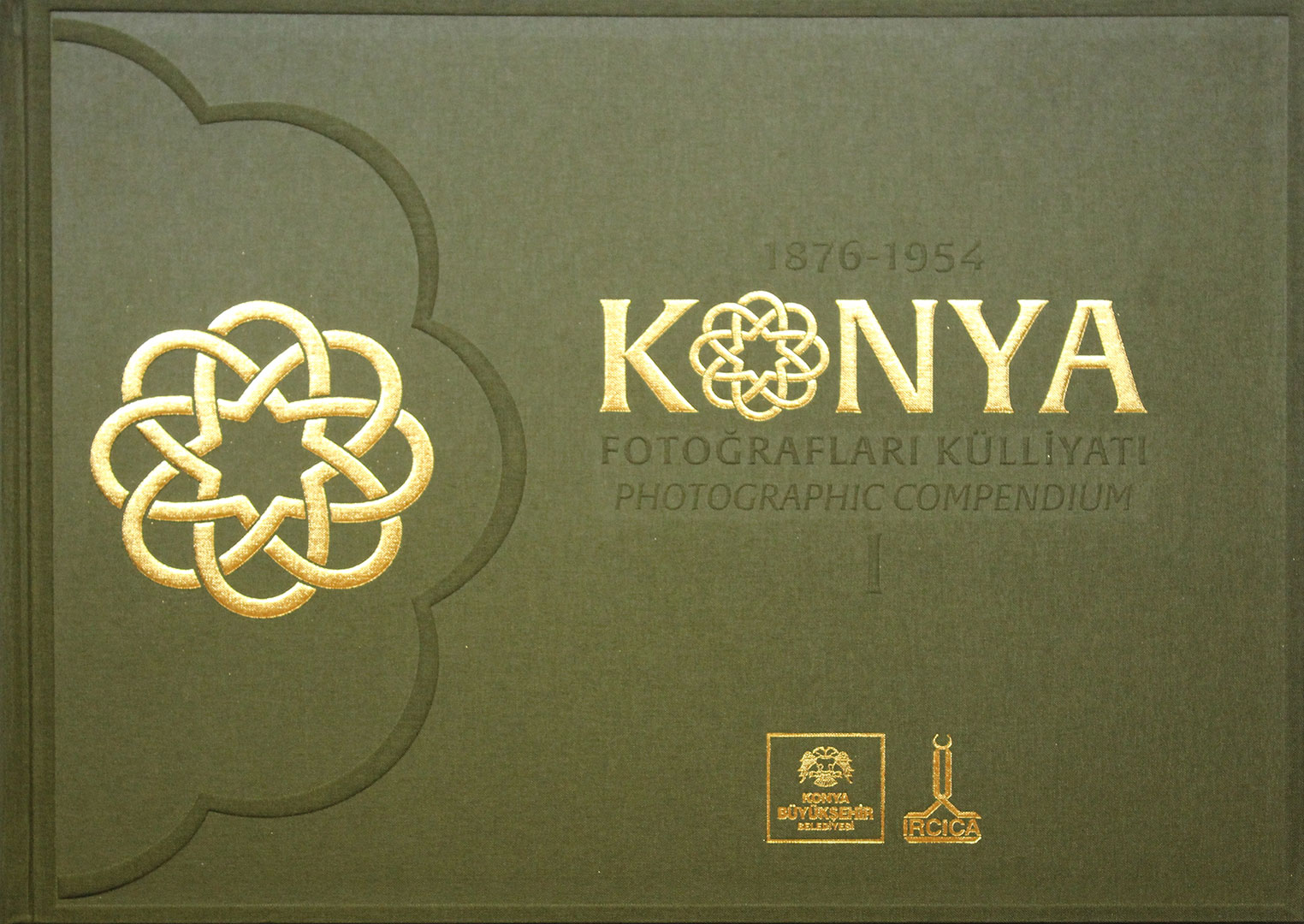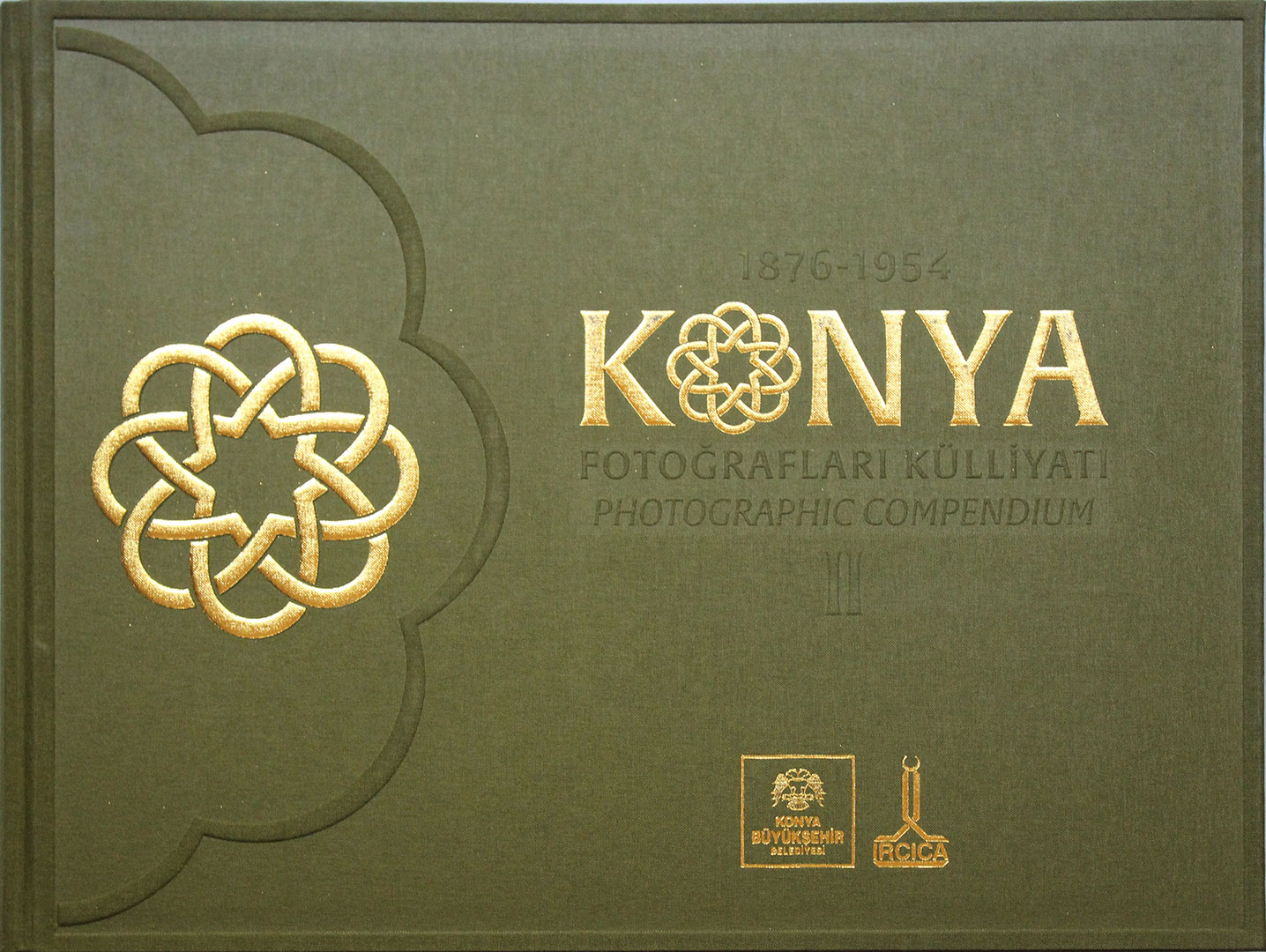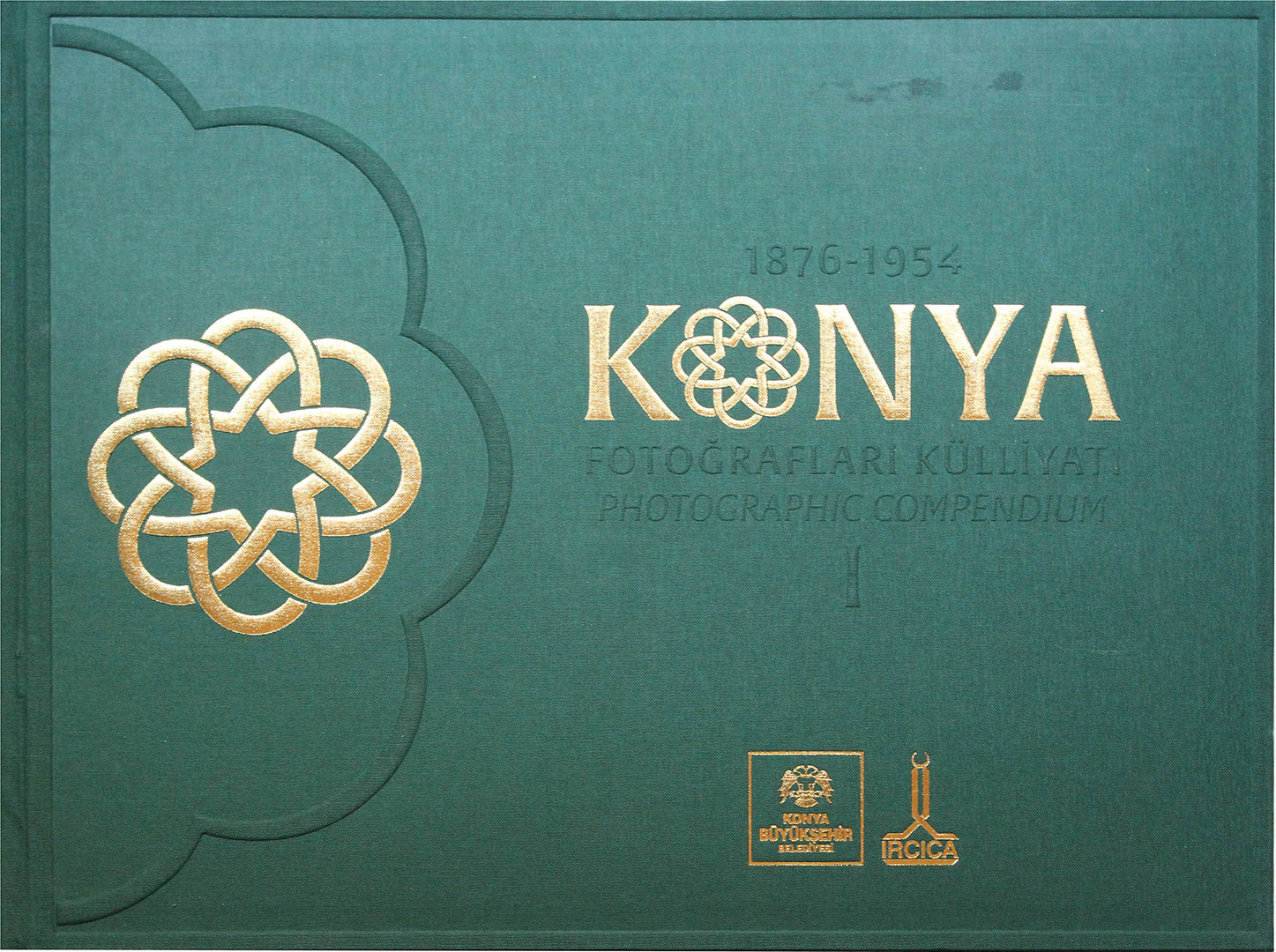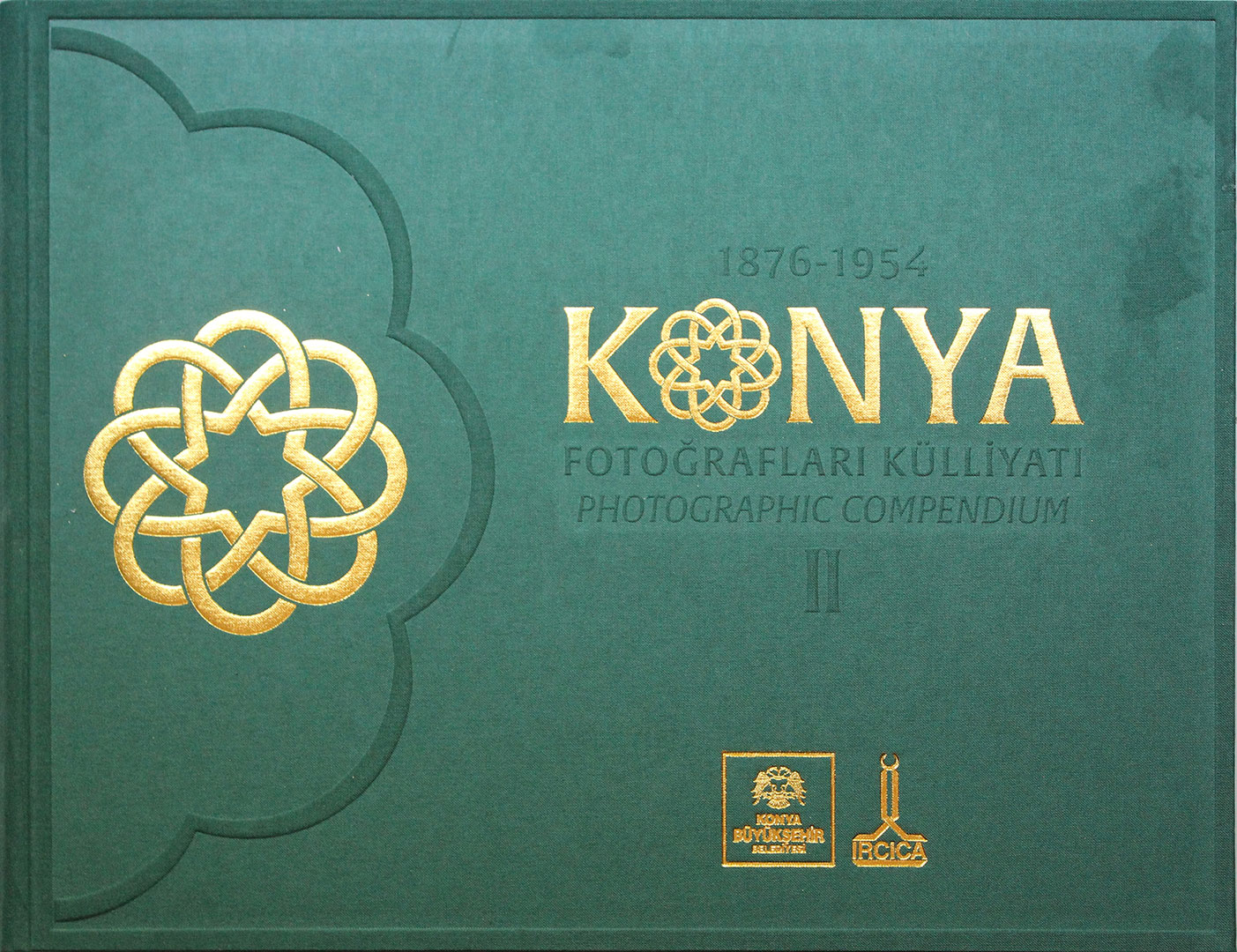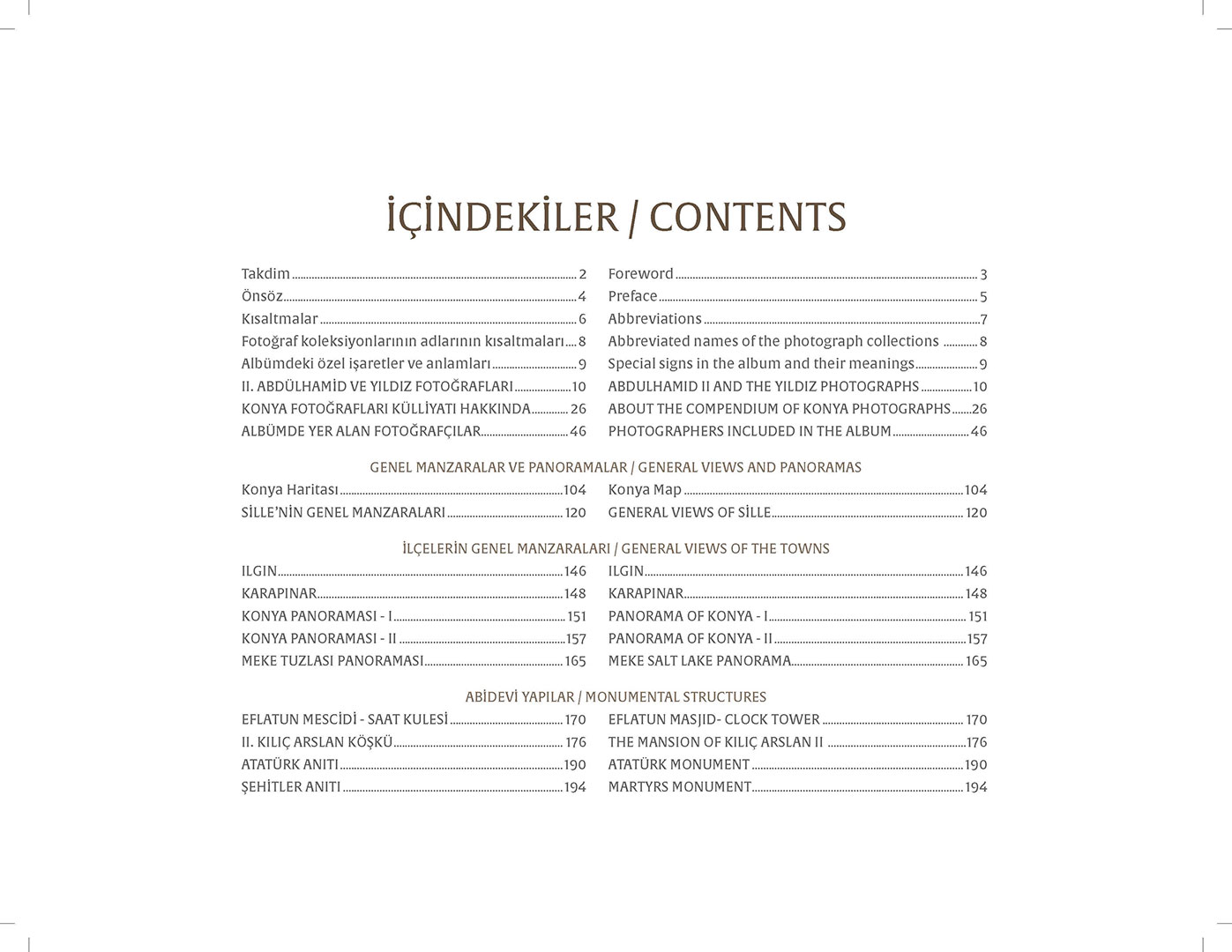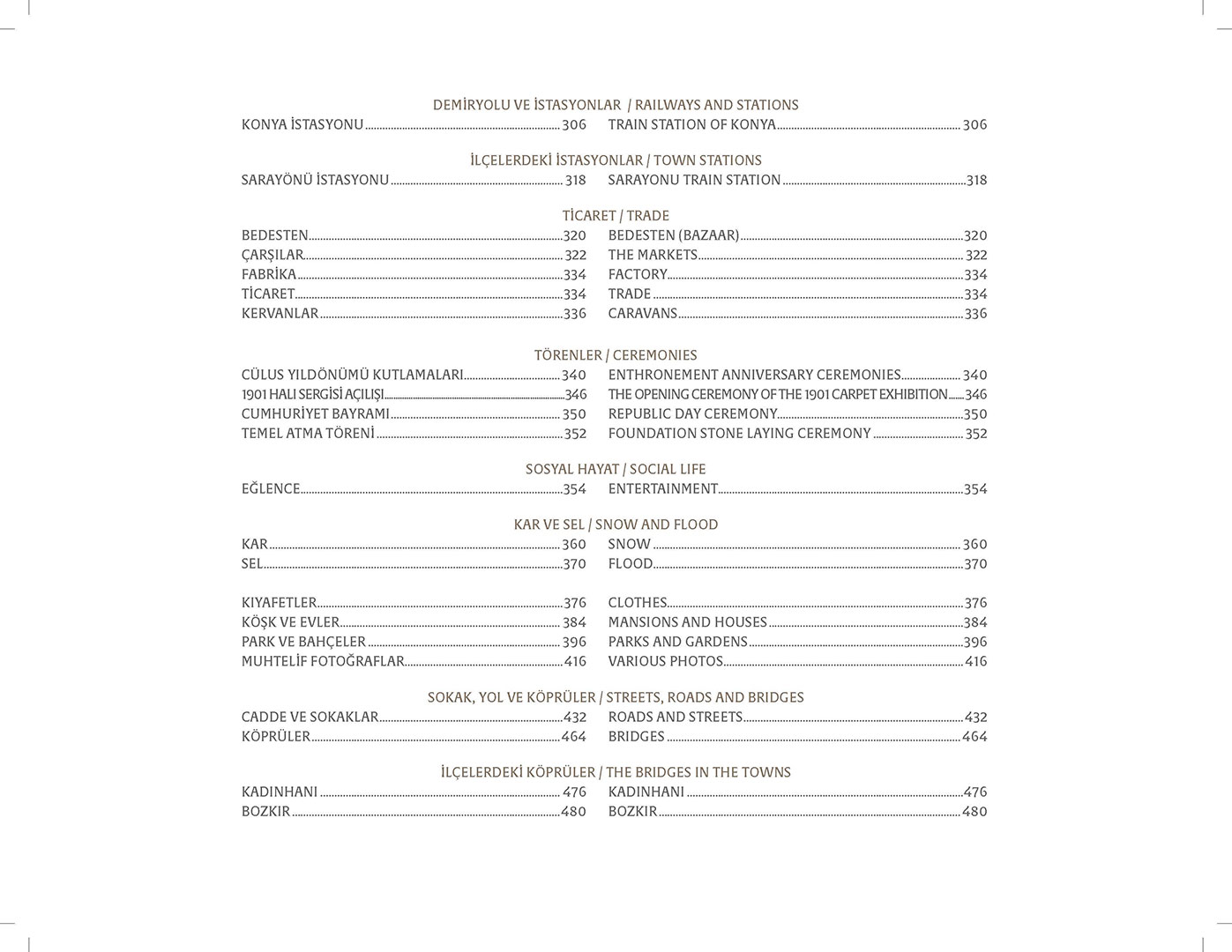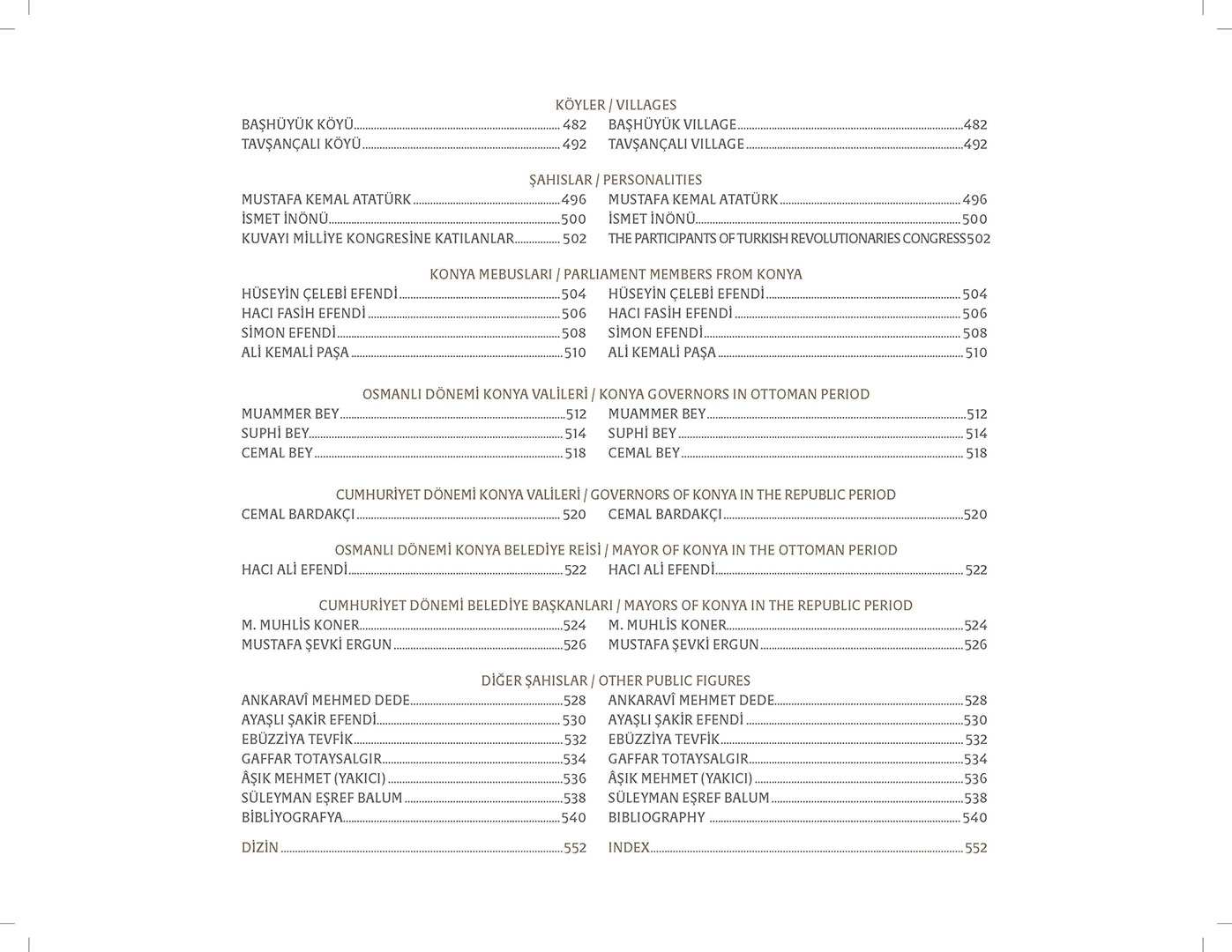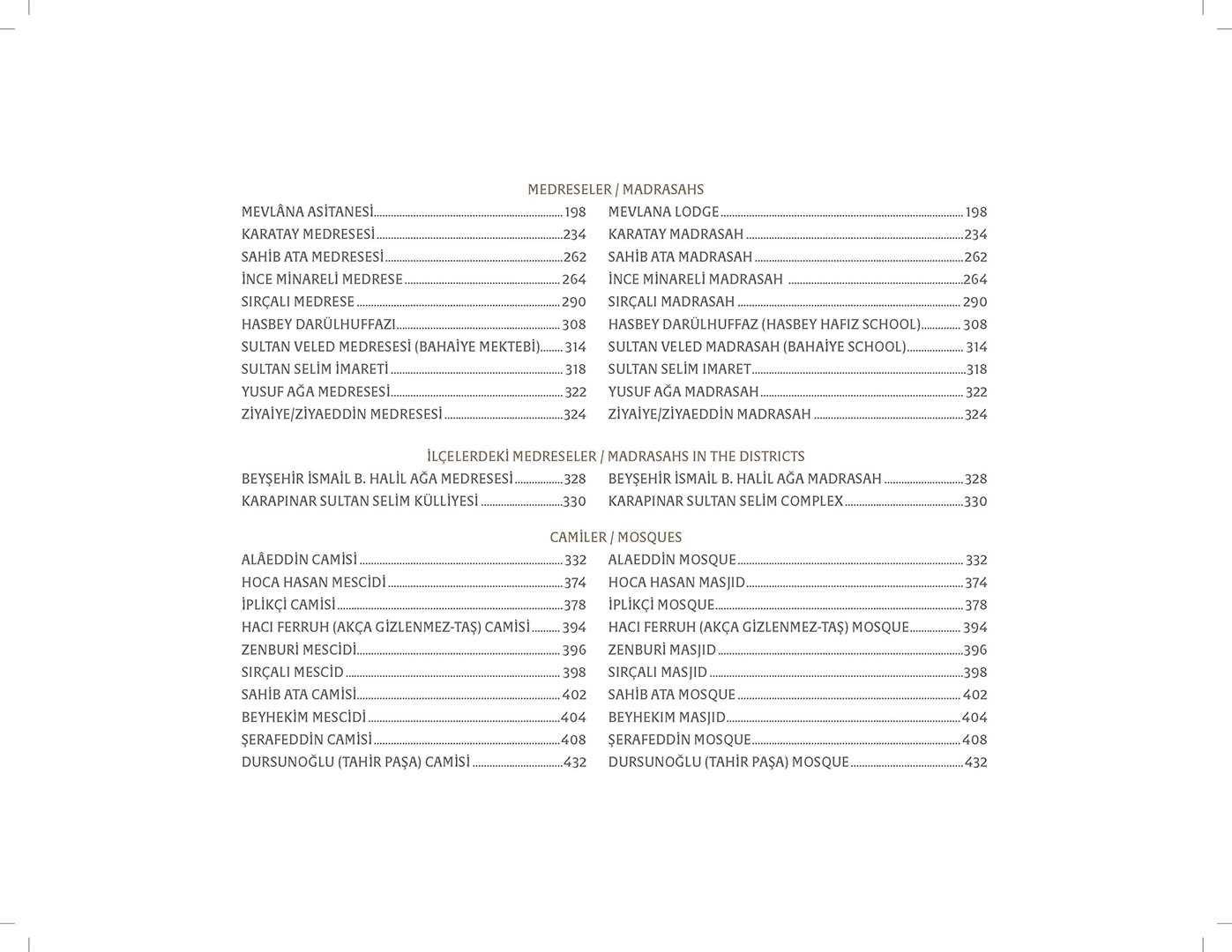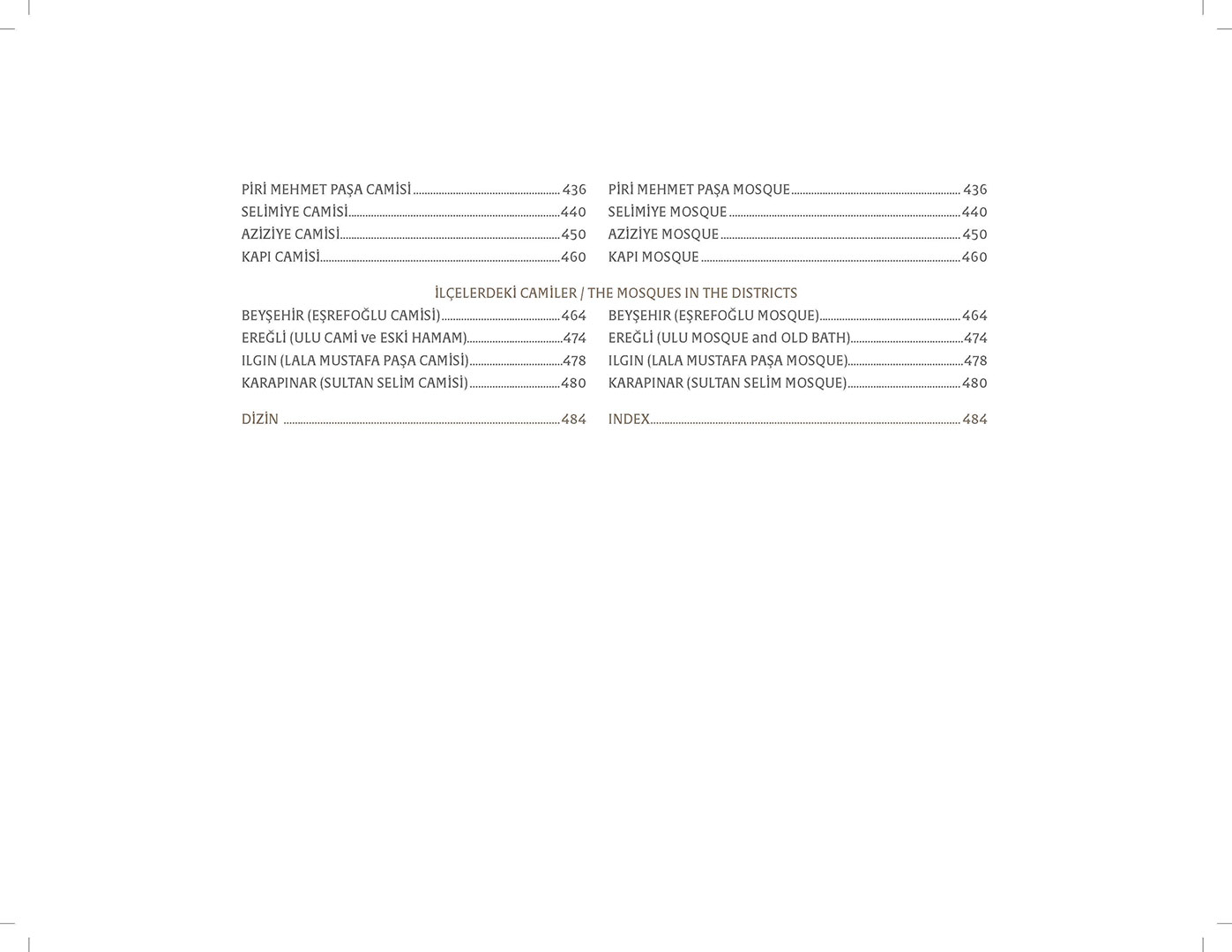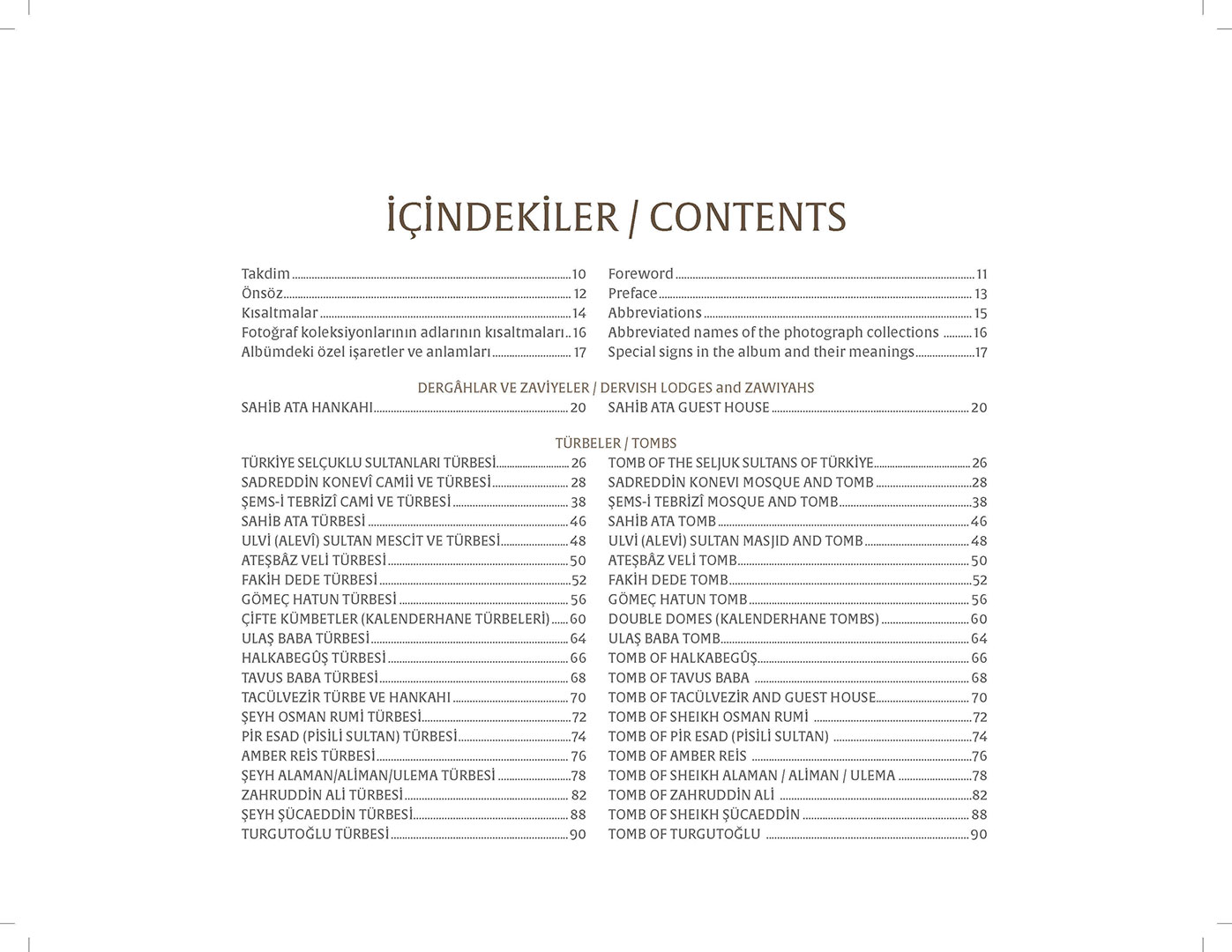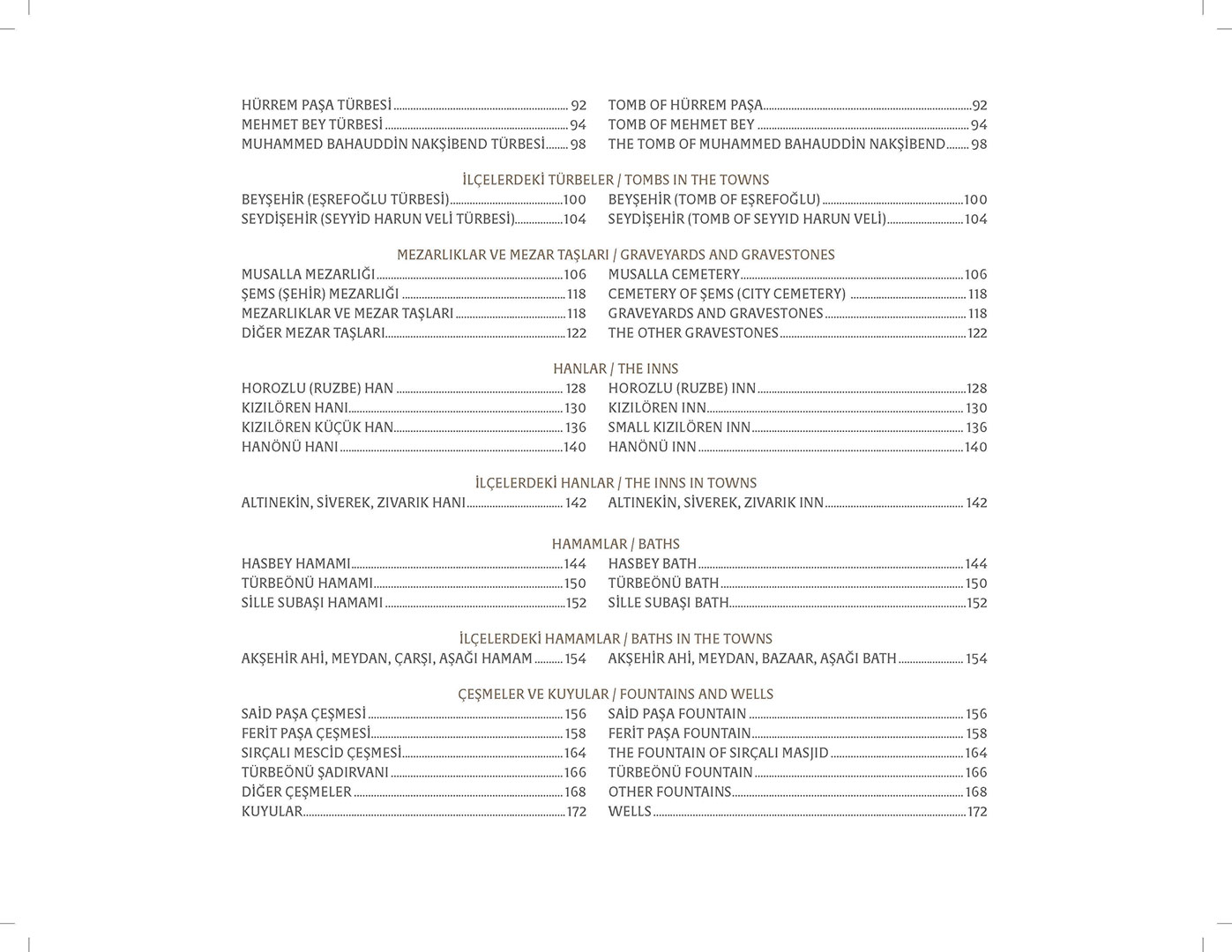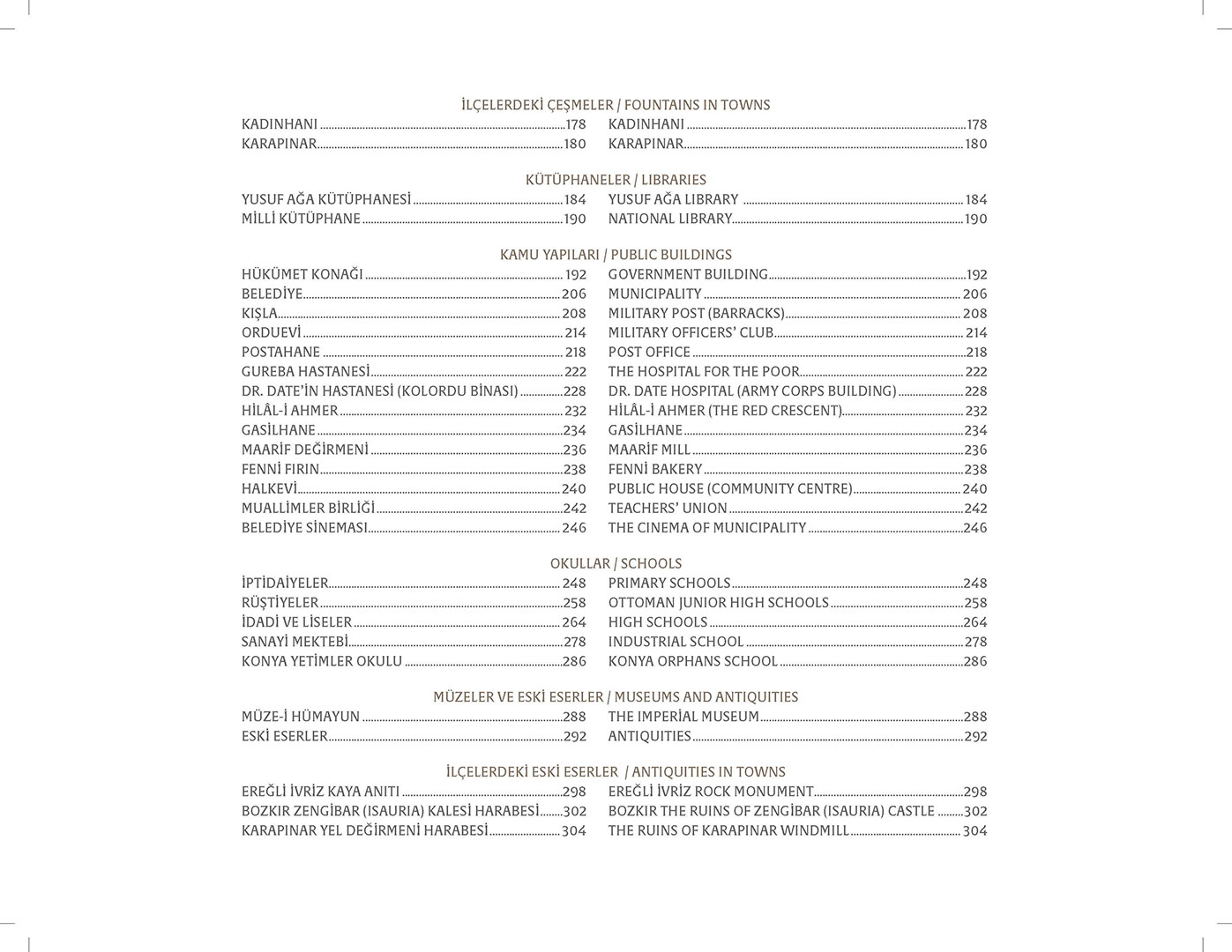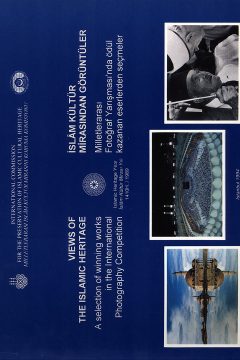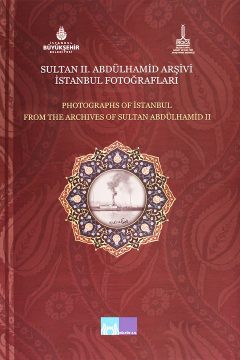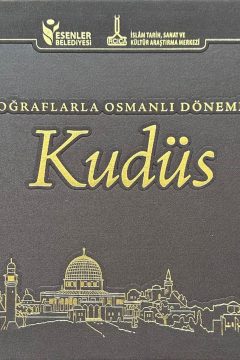This rich album of historical photographs of Konya (Türkiye) resulted from an ambitious joint project of IRCICA and Konya Metropolitan Municipality that aimed to compile the photographs of Konya contained in the archives of IRCICA and the collections of the Municipality in a comprehensive album that would serve as a reference for generations to come. The photographs, generally dating from the last quarter of the 19th and first half of the 20th centuries, depict the city structures, monuments, streets, social life and economic activities, with emphasis on architectural heritage from earlier periods of history, especially the Seljukid and Ottoman periods. The extensive annotations provided for each photograph contain detailed historical information. Additionally, ample information is given about the history of photography and photographers in Konya.
Located at the centre of Anatolia, Konya was a leading administrative and cultural center in its region at any moment of history. One of Konya’s peak periods started when it became the Seljukid capital in the 11th century. It was embellished with mosques, institutional and infrastructural constructions; economic activities flourished; the city became known internationally as a center of scholarship, Sufism in particular with Mevlana Jalaluddin Rumî and other illustrious Sufi scholars associated with Konya. After the dissolution of the Seljukid State, Konya became the capital of the Karaman Beylik in the 15th century. The city continued to prosper during the Ottoman period, becoming an advanced centre of manufacturing and commerce. It has been a centre of production, trade, and cultural/ religious tourism under the Turkish Republic. IRCICA’s activities relating to Konya had started with the adoption of Konya as the OIC City of Tourism 2016 by the Islamic Conference of Tourism Ministers of the OIC; in this context, IRCICA, jointly with Karatay University and Konya Metropolitan Municipality, organized the international symposium on “Konya in Islamic Civilization” the same year, and published its proceedings.
Numerous photographers, travelers and/or archeologists visited or settled in Konya starting from the advent of photography in the Ottoman State. The album contains more than 600 photographs, with explanations in English and Turkish. The Introduction is followed by articles on the Sultan Abdulhamid II and the Yıldız Photograph Albums, the compendium and the collections of Konya Metropolitan Municipality, the photographers included in the album. Then, the photographs and their explanations are grouped mainly as follows: General Views and Panoramas; Monuments and Antiquities; Madrasahs; Mosques; Dervish Lodges; Toms and Gravestones; Khans; Public Baths; Fountains and Wells; Libraries; Public Buildings; Schools; Museums and Antiquities; Railways and Train Stations; Trade, Factories; Ceremonies; Social Life; Snow and Floods; Clothes; Mansions and Houses; Parks and Gardens; Miscellaneous Photographs; Streets, Roads and Bridges; Villages; Personalities.
